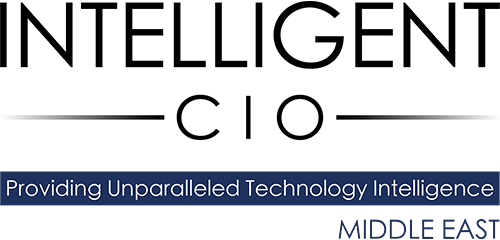In order to choose the right solution for a data platform, organisations need to take a step back and understand their data requirements, which can be complex, and how IT can support business goals and create end user benefits, explains Patrick Smith at Pure Storage.
In today’s complex business environment, organisations are grappling with how to create value from all their data, doing more with less and ensuring productivity. Many are looking for solutions which make their business run in a smoother, more streamlined way to maximise outcomes. Understanding their data is the key to this.
But there is a lot of complexity in how data is stored, accessed, managed, protected and analysed. The platform that data sits on has to be modern, built for current and future purposes. Having the right platform will enable vendors to make data-driven decisions about the right investment options and timing, solving challenges, improving customer experience, incorporating flexibility to try new things and innovate.
Many years ago, flash was not considered suitable for data where fast access was not needed. However with flash now at parity with legacy spinning disk in terms of cost and the advances in flash management, it is possible to use flash for all storage workloads, even large-capacity price-sensitive workloads.
While there are workloads which have traditionally been thought of as tier 1 flash-suitable, such as quick data requirements for relational databases, analytics or AI, now organisations should be leveraging flash for all workloads. The dynamic has changed and organisations are not just thinking of flash for performance anymore as there is no longer any justification for a disk or hybrid system.
Further adding support for an all-flash data centre is the competitive landscape. Some vendors chose iterative change when they started by repackaging existing solutions and programming their flash to work like a disk. Vendors who have been all-flash from day one do not have this baggage. The legacy approach ultimately does not meet modern requirements and creates more complexity as old HDDs are not developed with modern purposes in mind.
What makes this transition a reality now is cost efficiency driven by larger capacities and system efficiency; Pure Storage has announced 75TB drives with a roadmap that targets 150TB next year and 300TB within the next three years. Looking at the investment rate in HDD it is impossible to compete with the benefits and capabilities of all-flash.
In order to choose the right solution for a data platform, organisations need to take a step back and understand their data requirements, which can be complex. They need to consider what success looks like: how IT and data can support both wider business goals and create end user benefits.
Some of the complexity includes avoiding lock in; enabling flexibility of data movement; application development being done in containers; and managing existing storage inefficiency as few start from a greenfield situation with nothing in their data centres. Understanding this should mean it is easier to identify a vendor who can support these needs.
Most, if not all organisations have a full range of needs for their data storage: fast access for immediate, customer facing applications; scale-out unstructured data repository; as well as cold data storage such as long term archive and back up.
These modern, but complex needs cannot be shoehorned in one specific storage format. Depending on an organisation’s goal, they should have the flexibility to use block, file or object storage in any combination that works for them. These options should be able to support diverse workloads across a range of price and performance requirements.
Organisations should be looking at a workload first model to determine which they need. This more holistic approach means organisations can better match business needs.
For example unstructured data is expected to continue its exponential growth and most AI algorithms are trained on unstructured data. Supporting it with fast file and object storage is necessary to enable organisations to get the best out of their data and meet modern goals.
Not only should organisations find a vendor who can support all data and application requirements, but also one who has a concise portfolio to meet those needs whether they be for scale-up latency sensitive or scale-out throughput optimised workloads.
The right platform needs to scale to an organisation’s data needs, rather than vendors imposing limits based on legacy technology and approaches. The right vendor can help IT extract the most from their data for both critical and non-critical systems with the optimal platform – delivering efficiency, simplicity, and performance.
Managing skills requirements can be difficult. Especially when organisations are dealing with multiple environments, block, file and object storage, on-premises and cloud. Historically, it was commonplace for vendors to expect customers and channel partners to spend a week with them learning about how to operate their kit or commit to expensive professional services engagements.
Many organisations are proud of this technology, which is so complex, it takes several days of training to understand. It was part of the investment so customers should accept it and then repeat the process for each technology refresh and training cycle.
However it should not be this way. Vendors should be simplifying infrastructure operation and management and ensuring customers can have one way to view all storage. There should be software which uses AI driven insights to deliver recommendations, updates and upgrades when needed.
This simplification and additional support in the management of infrastructure aids business level decision making, lowers overheads and delivers more efficiency.
Listening to customers complain about complexity has been a driver for Pure Storage to develop a single operating environment. Vendors should be optimising hardware, and also if the software which manages hardware is optimised. One environment for everything should make processes simpler and faster for customers.
One operating environment means consistency of operation, the concepts for managing block, file and object storage become the same as it is the same management paradigm. If a team is spending less time learning new systems, they have more time for higher value tasks and innovation.
By reducing the complexity from disparate software and hardware platforms, customers can accomplish the same tasks faster and with less stress.



